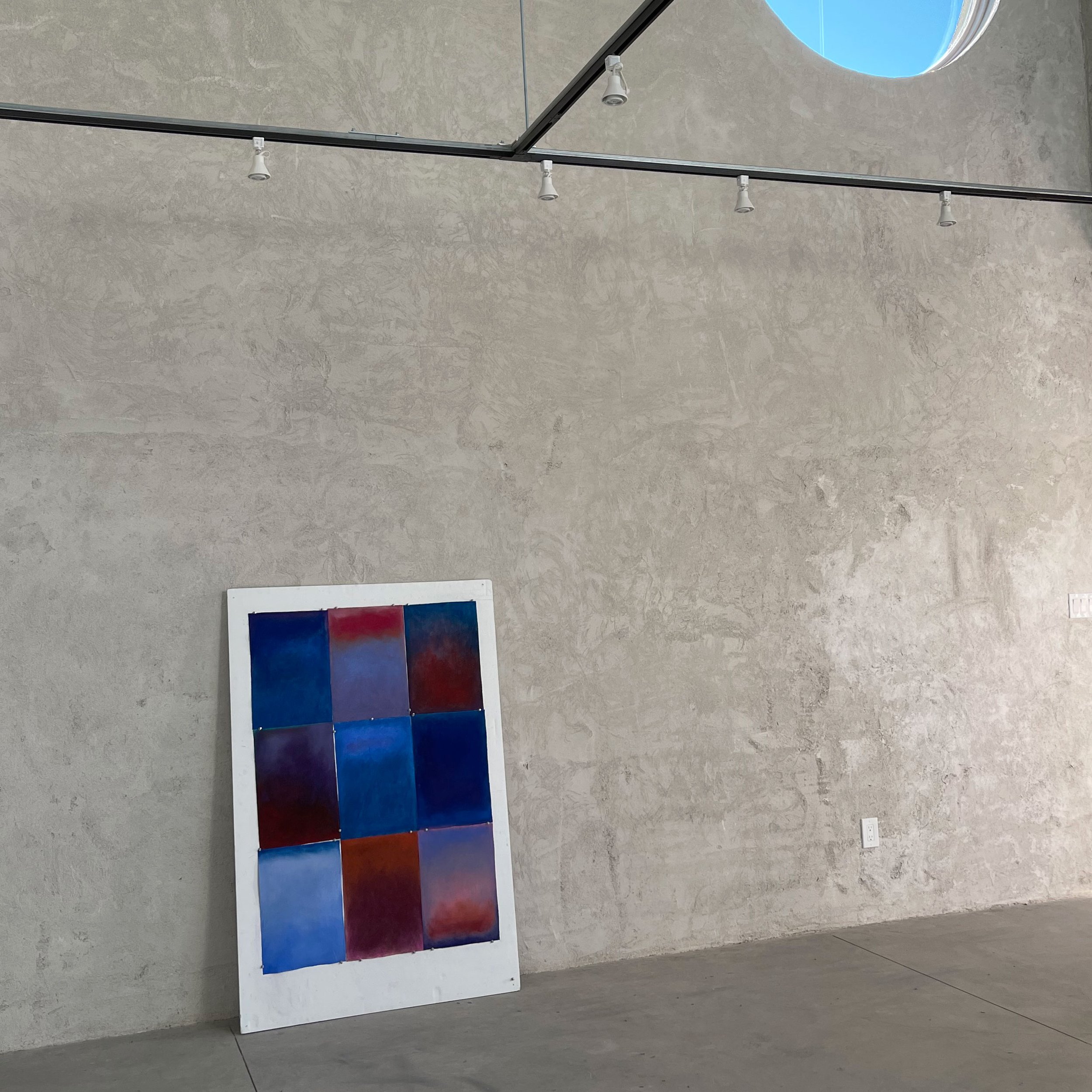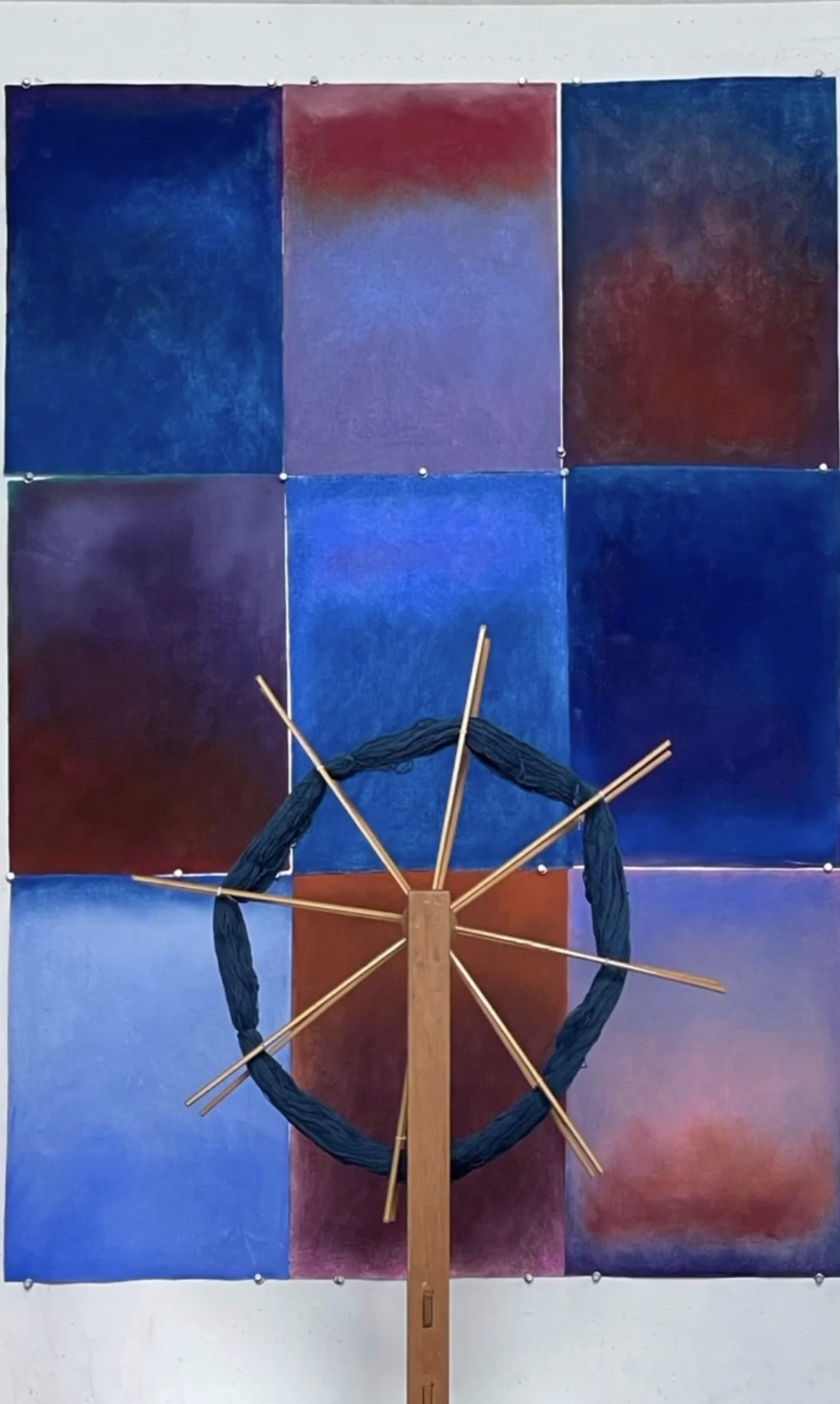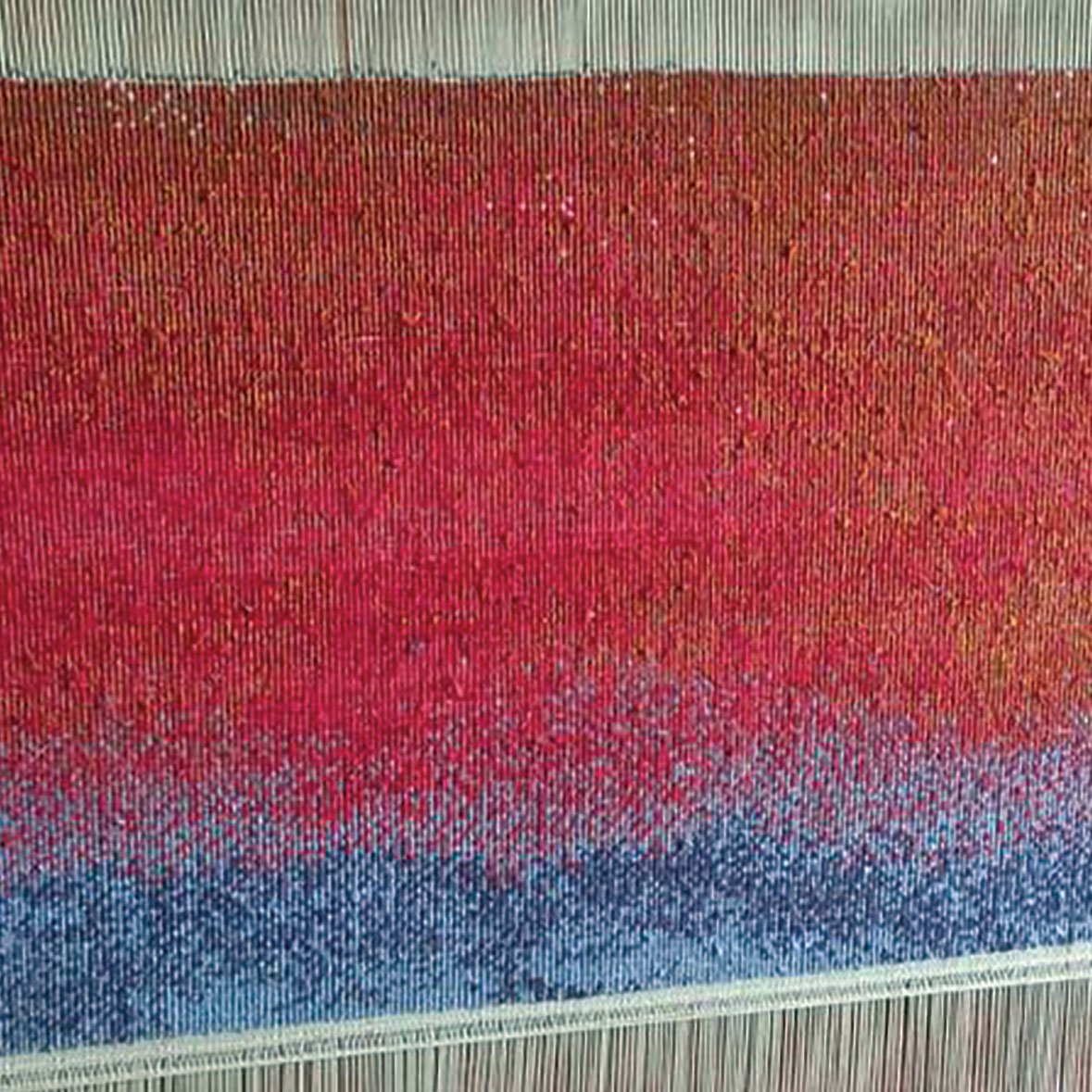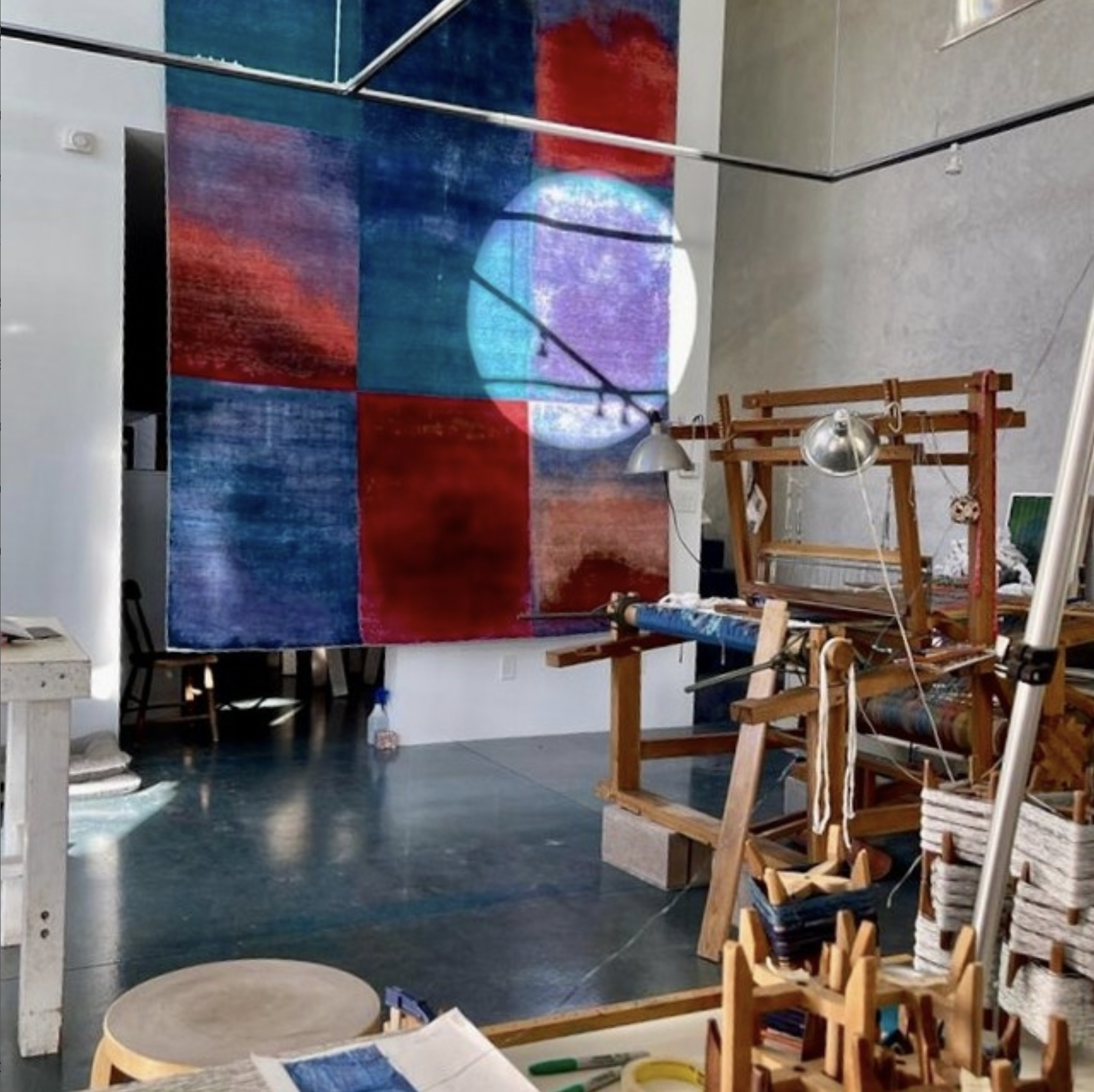Poetry for the Home
“Memories tied to cloth,
Cloth tied to loved ones;
My father loved rugs!”
He would stuff his traveling suitcase with woven camel saddlebags from Tunisia and cover our sofas with their scratchy colors. My sisters and I grew up on Persian rugs and pillows of treasured textiles. He would sneak yet another fabulous purchase from a rug dealer in a bustling market and with his excellent eye find just another place for yet another a prayer rug in our living room.
If only he was still here to enjoy my pleasure in finding ways to bring color into a home: memories of landscapes and skyscapes, of moods evoking pleasure, and color as poetry for the wall or floor.
Ghazal (Arabic love poem), 2023, 9’ x 12’, one of a kind wool and silk rug woven in India by Sambhav.
Photography by Wendy McEahern Photography.
Ghazala is highlighted in the Autumn 2023 issue of Cover magazine
In COVER 65 we featured the beautiful textile creations of Santa Fe-based artist Polly Barton. Seven issues later and here we present Barton’s first wool and silk rug, titled Ghazala, named after a form of Arabic love poem. Read more…
From Dare, Revel Dive in Cover magazine, by Denna Jones
You cannot travel the path until you become the path’ is a Buddhist belief that expresses the more than forty-year artistic journey of New Mexico-based fibre artist Polly Barton. She didn’t know her path when she graduated with a degree in History of Art from Barnard College in New York City, but she replied to an ad on the notice board in the college’s recruitment office and became an assistant to abstract expressionist painter Helen Frankenthaler (1928-2011). ‘The irony
is I didn’t know that much about her because at that time [1970s] the art history teaching timeline stopped around the 50s and 60s.’ Frankenthaler created the initial path for Barton’s journey to paint with weave. Barton only worked for Frankenthaler for one year, but her influence was ‘huge’, she says.
In 1978 Barton went to Japan as an exchange student. She visited a weaving studio ‘filled with incredible colours of dyed silk’. She returned to Japan in 1981 to study weaving at the Oomoto School of Traditional Arts. She discovered weaving was her calling. She learned silk weaving from the man who warped the looms of ‘living national treasure’ Fukumi Shimura. ‘As I learned to weave and discovered the art of ikat, I felt very much that seeing how Frankenthaler impregnated her canvases with pigment gave me “permission” to build up my layers of colour.’ Barton credits her love of colour creation to Frankenthaler, but her adherence to the nature of materials is thanks to Shimura’s nature-based trinity of plants (colour), animals (thread), and minerals (mordent). Barton’s ‘a-ha’ moment occurred as she gazed out the window of a Japanese train. I remember thinking, ‘I want to paint in silk and do it on a loom.’ She began weaving with tsumigi (a 2-ply silk yarn spun with intentional nubs and unevenness) and a ‘slubby’ 1-ply weft.
Barton’s 2021 solo exhibition Dare, Revel, Dive at Chiaroscuro Gallery in Santa Fe, New Mexico was five years in the making. The title groups three bodies of work: four ikat banners with warp designs (Dare), pastel fields on paper (Revel), and linen paper she handweaves and augments with mixed media (Dive). Dare began in 2016 as a continuous set of vertical silk threads under tension on the loom. Each warp section has a distinct design impregnated with dyes and stains such as soy milk and sumi ink. She rubs, drips, and oozes her fluid media to achieve the desired look which ultimately becomes a bridge between painting and weaving.
Barton’s path led her to the southwestern state of New Mexico in 1992 where she is still based. ‘My identity as a weaver strengthened after moving here,’ she says. ‘I realise how much interest I have in taking various fibre textures and colours and working with different media.’ The poetry form known as pantoum is an idea informing Barton’s plans for new weaves. The second and fourth lines of the first quatrain (stanza) of a pantoum are reintroduced into the second quatrain as the first and third lines while the second and fourth are new lines. This ‘interwoven’ pattern continues throughout the poem. Barton is pursuing how she can adapt pantoum to weave by exploring the tactile textures of pottery by Akiko Hirai and concepts gleaned from a workshop she attended taught by Nigerian-born, New Mexico-based indigo dye master Gasali Adeyemo.
‘Blank canvas paralysis’ often grips artists at the start of a painting. ‘The blank canvas is hard,’ Barton confirms. She avoids the situation by recognising her hand-painted warp is ‘very much a part’ of her design and art. She sketches an idea and creates colour groups, or she says, ‘I just have no idea and let [the process] flow.’ She weaves her silk ikats on tsumugi silk kimono looms. In the 1990s she tried her hand at rug weaving on a ‘walking loom’ used to weave the local Rio Grande style of rugs, but she ‘didn’t take to it’ because ‘it was too controlled’ and she ‘couldn’t achieve a painterly quality’. Barton is revisiting the idea of creating a rug, but as a collaboration with a weaver who will interpret one of her Revel pastel fields on paper.
Barton’s father was Dean of the Episcopal St John the Divine in New York City. ‘One of his passions was interfaith,’ she recalls, an ecumenical, embracing belief that helps us understand the roots of Barton’s artistic journey and the path she continues to travel, create and become.
Photography by Wendy McEahern Photography and Polly Barton.
















